WoW Classic Hardcore Druid PvE Guide (Leveling, Builds & Survival)
Druids in WoW Classic Hardcore are famed for their unparalleled versatility – able to tank, heal, or DPS in PvE thanks to their shapeshifting forms (Bear for tanking, Cat for melee DPS, Moonkin for caster DPS, and caster form for healing). This guide is a comprehensive resource for mastering the Druid class in Hardcore mode without dying, focusing exclusively on PvE gameplay. We'll cover everything from leveling strategies and talent builds for all three specializations (Feral, Balance, Restoration) to key abilities, gear (including best-in-slot lists), profession choices, survival tactics specific to Hardcore, solo vs. group strategies (dungeon tanking, healing, DPSing), as well as trading and economy tips for Hardcore servers. Whether you're a beginner or an experienced player, this guide will equip you with the knowledge to survive and thrive as a Druid in WoW Classic Hardcore.
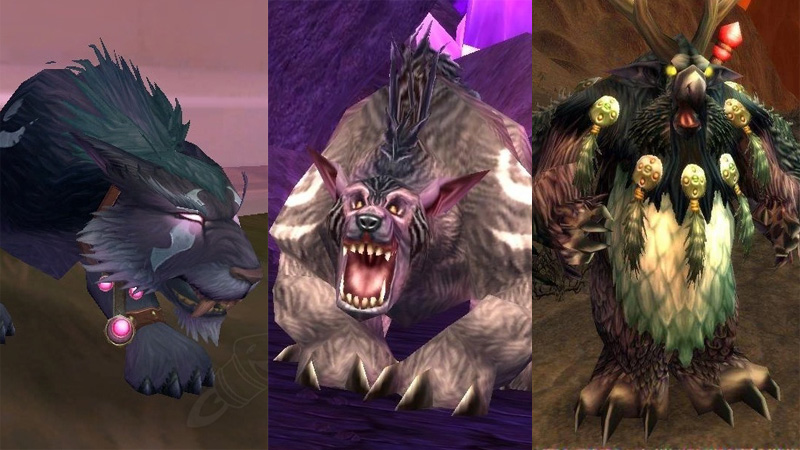
Why Play a Druid in Classic Hardcore?
Druid is often called the "jack of all trades" of WoW Classic. In Hardcore (one-life) servers, this adaptability becomes a major asset. Here's an overview of the pros and cons of Druids in Hardcore PvE:
Pros of Druid in Hardcore PvE
Druids can fill every role in PvE – tank, healer, or damage dealer – without needing to reroll. This flexibility means you can adapt to what the situation or group needs at any time. In a dungeon group, you can tank, heal, or DPS as needed, and even swap roles mid-fight in emergencies (e.g. throw out a clutch heal or pick up aggro if the healer or tank dies). This makes Druids invaluable as a safety net in Hardcore groups.
Druids boast some of the best mobility in the game. Travel Form (unlocked at 30) grants a 40% movement speed boost and can be used outdoors to flee dangerous encounters. Combined with abilities like Dash (Cat form sprint) and Swim Speed (Aquatic Form), a Druid can escape many sticky situations. It's very hard for enemies to pin down a Druid in the open world. If you accidentally over-pull mobs, you have tools to disengage – Entangling Roots or Nature's Grasp to root enemies, then run, or shifting to Bear for extra defense until you can escape.
Druids uniquely make use of all three resource types – Mana (caster form), Energy (Cat), and Rage (Bear). This means while leveling you can alternate between casting and melee forms to minimize downtime. For example, open with a few spells (using mana), then shift to Cat to deal damage with energy while your mana regenerates in the background. Properly managing these resources leads to almost continuous grinding with little need to eat/drink.
Druid's toolkit makes them excellent for solo play and fantastic duo partners. If you pair with a class like Warrior (which lacks self-healing and mobility), a Druid can complement them by off-healing, buffing, and handling CC, all while still contributing damage – greatly increasing the pair's survival. Solo, Druids can handle a variety of content thanks to their forms and spells; they can stealth like a Rogue, tank elites in Bear, or heal themselves in a pinch.
Aside from block value (which only applies to shield users), every stat is useful to a Druid. Strength, Agility, Stamina, Intellect, Spirit – you benefit from all of them in different forms. This makes gearing while leveling simpler: basically any upgrade with higher stats is worth considering. You can take "of the Monkey" (Agility/Stam) or "of the Eagle" (Int/Stam) gear and get value either way. This also means you can make use of many drops – nothing is truly "wasted" on a Druid.
Cons of Druid in Hardcore PvE
Despite these challenges, Druids remain a top-tier choice for Hardcore due to their escapes and versatility. Next, we'll dive into how to level up a Druid safely and efficiently on Hardcore, and how to build your talents for success.
Leveling a Druid in Hardcore (1-60)
Leveling in Hardcore is a careful balancing act between efficiency and safety. Druids have a relatively slow start but blossom after level 20. In this section, we'll outline optimal leveling strategies, including what spec to choose, talent builds, rotations, and tips to stay alive during your journey to 60.
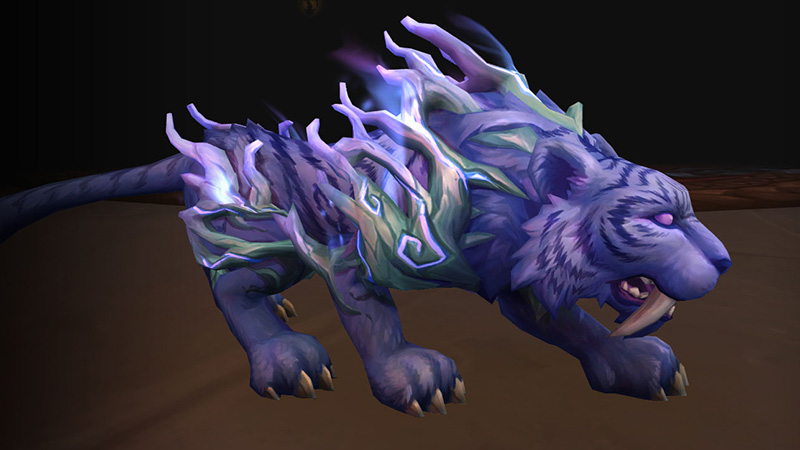
Recommended Leveling Specialization
For most players, Feral is the best leveling spec for Druid in Classic Hardcore. Feral (the melee DPS/tank tree) offers high sustained damage with low downtime (thanks to Cat Form) and great survivability (Bear Form). By level 20, you gain Cat Form, which dramatically speeds up leveling with its energy-based attacks and stealth utility. Feral also lets you seamlessly switch to Bear Form when you need to tank tougher mobs or oh-no situations.
Balance (the caster DPS tree, a.k.a. "Boomkin") is generally not recommended for solo leveling in Hardcore. Balance spells can deal good burst damage, but you'll suffer from mana issues and lack of clearcasting (Omen of Clarity) until deep in the tree. That said, some players do level as Balance for a challenge or if duo'ing with a partner who can tank – just know it will be slower and riskier solo.
Restoration (healing tree) is the slowest for leveling solo, as it's geared towards healing in groups. However, a hybrid approach is useful: many leveling builds grab a few key Restoration talents (like Furor and Omen of Clarity) to support Feral play. If you plan to level in a duo or trio as the healer, you might go deeper into Resto for Improved Healing Touch or even Innervate, but you'll still spend a lot of time in Cat or Bear to do damage when not healing.
Talent Build for Leveling (1-60)
To survive Hardcore leveling, we use a two-phase talent approach for Druids:
- Levels 10–20: Invest in Balance tree for early damage.
- Level 20: Respec and switch to Feral tree for the rest of the journey.
Why this approach? Before level 20, you don't have Cat Form, so many Feral talents won't benefit you. It's more effective to boost your casting ability early on, then pivot to Feral once Cat Form is available.
Tip: Save up 1g by level 20 – you'll use it to respec into Feral at the trainer.
By casting high-rank Wrath and using these Balance talents, you maximize damage in the early levels to kill mobs quickly before they overwhelm you. Always keep Rejuvenation (your HoT heal) on yourself and Thorns on enemies for extra damage. At level 10, do your Bear Form quest ASAP – Bear Form gives you a huge survivability boost for tough fights. Use Bear Form when you need to tank multiple hits or against elites, but use Wrath and melee in caster form for general killing until 20.
- Feral Combat Tree: Take Ferocity (5/5) first – reducing the energy cost of Claw/Rake (Cat) and rage cost of Maul (Bear) helps your damage and threat. Next, Feral Charge (requires lvl 20, Tier 3) for an excellent gap-closer/interrupt in Bear form. Thick Hide (3/3 or 5/5) early on boosts your armor, making you tankier in Bear (important in Hardcore to mitigate damage). Feline Swiftness (2/2) is optional – it gives 30% movement speed in Cat Form (nice for faster leveling and indoor areas), but since you get Travel Form at 30 for outdoor speed, you may skip Feline Swiftness if you prefer more combat-oriented talents. Brutal Impact (2/2) is very useful to improve Bash stun duration (more stun = more safety or damage time). Predatory Strikes (3/3) and Savage Fury (2/2) boost your Cat Form damage significantly (more Attack Power and increased damage to core abilities). Heart of the Wild (5/5) at the bottom of Feral is a huge stat boost (20% extra Int in caster form – great for mana pool – and 20% more Str in Bear/Cat – great for damage and health). Be sure to take Faerie Fire (Feral) along the way (level 30 talent) for a free ranged pull that doesn't break Cat stealth.
In addition, many Feral leveling builds invest 5 points in Restoration's Furor talent early (5/5 Furor ensures you have 10 rage when shifting to Bear or 40 energy when shifting to Cat). Having instant rage/energy when you shapeshift is a lifesaver in Hardcore: e.g. you can Bear Form -> Bash immediately to stun a fleeing mob or Cat Form -> instantly Rip without waiting for energy. You can take Furor at level 20 respec (e.g. 5 Furor, rest into Feral) or after key Feral talents – but do get it by your 30s.
By level 40, your Feral build should have all the core talents, and from 40–60 you continue filling out any remaining talents in Feral or even dip back into Balance for Omen of Clarity if you didn't earlier. At 60, a common leveling build ends up around 14 Balance / 32 Feral / 5 Resto (for example), but the exact distribution can vary. The key point is to leverage Feral for efficient killing and survival.
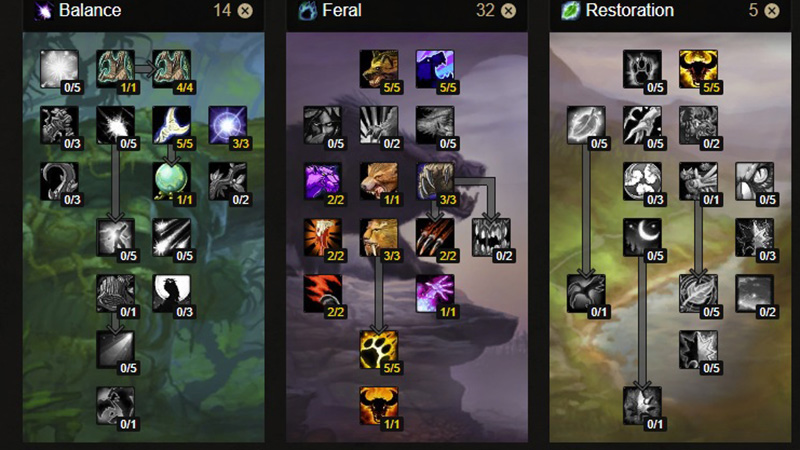
Leveling Rotation and Key Abilities
Levels 1–9: You're stuck in caster form. Use Wrath as your main nuke, and melee with your staff in between casts to finish off mobs and conserve mana. Keep Moonfire (instant DoT) handy for tagging mobs or finishing runners. Heal between fights with Rejuvenation or Healing Touch as needed. It's slow, but bear with it (no pun intended)!
Levels 10–19 caster tips: Continue casting Wrath when pulling or when you need burst. Since we took Improved Wrath, it's your most efficient damage spell early on. Use Nature's Grasp when you accidentally pull an extra mob: cast it, kite the mobs so they get rooted, and run away or create distance to heal. Entangling Roots (available at 8) can also root one mob at a time (outdoors) – a great way to split pulls. For example, root one mob, fight the other separately. Always reapply Mark of the Wild (buff) and Thorns on yourself; thorns returns damage to attackers and is free damage. At 12, you get Teleport: Moonglade (to do Druid quests) – you can use this as a free hearth to Moonglade and then fly to Darnassus or Thunder Bluff, which sometimes helps travel. At 16, do the Aquatic Form quest chain – aquatic form isn't used often, but it can save you from drowning or help in certain water quests.
Don't forget you can always heal and re-stealth: after a fight, cast Regrowth/Rejuvenation on yourself, then drink if needed, then Prowl to open on the next enemy. Cat Form also has Dash (level 26) for bursts of speed – useful for escaping or chasing runners.
Key Utility Spells: As a Druid, you have several life-saving utility abilities while leveling:
- Healing Spells: You have Rejuvenation (HoT) and Healing Touch (big heal). In combat, you might quickly shift out of form to cast a Rejuvenation on yourself, then back into form. Be mindful of mana for this. Plan to heal before it's too late – your armor drops in caster form, so it's risky to stay out too long mid-fight.
- Abolish Poison / Cure Poison: Poison can be deadly (e.g. poisoning spiders). Druids get Cure Poison at 14 (Alliance via quest, Horde by trainer) – use it to remove poison DoTs that could otherwise whittle your health.
- Travel Form (30): As mentioned, this is a 40% speed increase. It's instant-cast, meaning you can use it to flee even while being hit (no mount cast time!). It's one of your best Hardcore tools – if things go south outdoors, root or stun mobs and cheetah out of there.
- Innervate: If you go deep Resto later (31-point talent) you get Innervate to massively boost mana regen. If you're healing in a dungeon, Innervate can ensure you or a healer ally doesn't run OOM at a bad time. Even while leveling, if you happen to have it, it's a great safety cooldown for mana.
- Barkskin (44): This reduces damage taken by 20% and prevents spell pushback. It's usable even while stunned! If you get jumped by multiple mobs or an ambush, hitting Barkskin then trying to root or heal can keep you alive.
Hardcore Survival Tactics While Leveling
Leveling in Hardcore means one death = delete character, so survival is paramount. Here are Druid-specific survival tips (in addition to the general ones like "pull carefully" and "don't rush"):
By following these strategies and being patient, you greatly increase your odds of reaching 60 on your Hardcore Druid. Next, let's look at how each Druid specialization plays at endgame (dungeons and raids) and how to gear up for PvE success.
Feral Druid in PvE (Tank & Melee DPS)
Feral Druids in endgame PvE can serve as off-tanks or even main tanks for many dungeon and raid encounters, and can also spec/gear for melee DPS (often called "cat DPS"). In Classic WoW, Feral was not the top DPS nor the absolute best tank compared to Warriors, but they are entirely viable in PvE content – and in Hardcore, having a durable off-tank or backup healer in the raid (which a Druid can be) is incredibly valuable for safety.
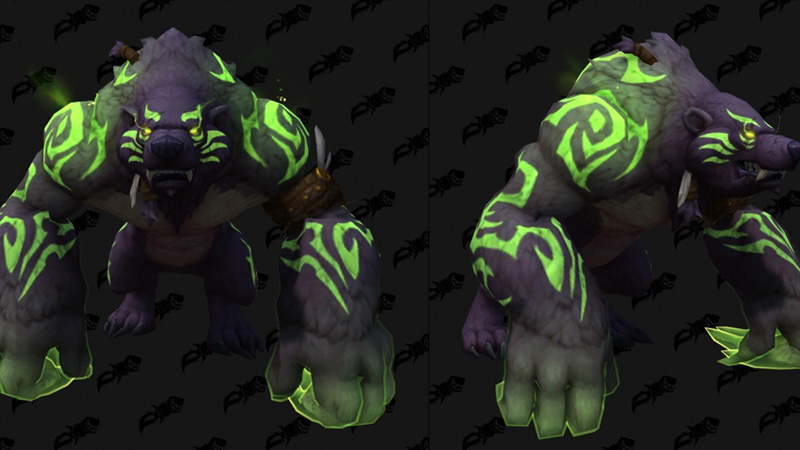
Feral Talent Builds for Endgame
At level 60, you'll decide if you want to focus on Bear tanking, Cat DPS, or a hybrid of both. The good news: a lot of talents overlap for both roles, so a single Feral build can do decent double duty.
A typical Feral Tank build (PvE) is around 14 Restoration / 32 Feral / 5 Balance. Key talents for Bear tanking include:
- Thick Hide (5/5) – increased armor from items (bears love armor for damage reduction).
- Ferocity (5/5) – helps both Bear and Cat ability costs.
- Feral Instinct (3/3) – increases threat generated in Bear/Dire Bear Form and improves stealth (threat is crucial to hold aggro as a tank).
- Brutal Impact (2/2) – longer Bash stun (can be useful for interrupts or emergency CC).
- Feral Charge – must-have for tanking to quickly reach and immobilize a target (e.g., caster mobs).
- Sharpened Claws (3/3) and Primal Fury (2/2) – these increase your crit chance and give extra rage on crits, fueling your Bear abilities.
- Heart of the Wild (5/5) – more stamina in Bear form (20% Int isn't as useful for a pure tank, but the 20% bonus to Sta in Bear is huge for your health pool).
- Leader of the Pack (1/1) – the 31-point Feral talent, giving 5% crit aura to your party. This is great for raid DPS and for your own threat (crits).
Meanwhile, the 14 in Restoration usually go into Furor (5/5), Improved Mark of the Wild (5/5) (nice buff improvement for raids), and Omen of Clarity (1/1), plus perhaps Improved Enrage or Nature's Focus. Some tank Druids even go 11 into Balance to get Nature's Grace for more frequent crits, but that's more common in a hybrid build.
For Cat DPS build, you would take many of the same Feral talents but could drop some tank-oriented ones like Feral Instinct (threat) and Thick Hide (armor) in favor of Improved Shred and Blood Frenzy (which in Classic increases your energy regen by 20% on a crit for 6 sec – very strong for DPS uptime). A popular high-DPS Feral build is 0/30/21: 30 in Feral (skipping Leader of the Pack) and 21 in Restoration to get Innervate. This "Heart of the Wild + Innervate" build (sometimes called HoTW/Innervate build) lets you perform as a DPS but also throw an Innervate or emergency heals as needed – very fitting for Hardcore where flexibility can save lives. It sacrifices Leader of the Pack aura but your raid might have another feral with it, or you deem Innervate more useful.
Feral Druid Key Abilities & Rotation (Tank and DPS)
Bear Tanking Abilities: Your main threat generator is Maul – it's like a Warrior's Heroic Strike, turning your next auto attack into a harder hit (bear Maul hits hard). Keep Maul queued almost every swing when tanking a boss or single target. For multiple mobs, Swipe hits 3 targets – it's your only multi-target threat tool, so use it on cooldown in multi-mob pulls. Open pulls with Faerie Fire (Feral) to grab initial aggro from range (it costs no rage). Enrage before a pull (generate initial rage, but remember it lowers armor for a few seconds – time it so the armor drop fades as you engage). Demoralizing Roar all enemies early to reduce their damage (improves your effective health). Use Bash to stun a target (great for interrupting a caster mob or stopping a runner). If an enemy flees, shift out and root it or hit it with Moonfire, then back to bear. Always keep an eye on your rage – unlike a warrior, you can't generate rage by being hit if you drop out of bear, so try to stay in form and use what you have efficiently.
Cat DPS Abilities: As a Cat in raids or dungeons, your rotation is simpler than modern WoW – basically keep Faerie Fire on the target (if no one else is), maintain Rip if the fight is long enough, and use Ferocious Bite to dump combo points when appropriate. You'll typically Shred as your main combo-point builder (position behind boss; Shred does more damage than Claw, especially if talented). If you can't be behind (some bosses are awkward), use Claw. Use Rake once for the bleed if the target lives at least 9+ seconds. Aim to get 5 combo points and then Rip for a bleed, then build again. If the target will die soon, use Bite for a big finisher instead. Unlike modern feral, Classic feral doesn't have many other things – no Savage Roar, etc. So it's about managing energy and timing finishers. Make sure to pop out to re-buff Mark of the Wild or cast an Innervate/Battle Rez on someone if specced for it and the need arises – your utility can be raid-saving in Hardcore. But when doing so, remember you drop your threat and armor; be careful not to get boss aggro after a shift.
Example Powershift Macro:
/cast !Cat Form
Gearing Up a Feral Druid (Pre-Raid & BiS)
Proper gear greatly enhances Druid performance. Feral gearing often diverges between Bear tank gear and Cat DPS gear. Here we'll highlight some best-in-slot (BiS) or highly recommended items for each role in Phase 1 (pre-raid and early raids), as well as general stat priorities.
Stat Priorities:
- Bear Tank: Armor > Stamina > Defense > Agility > Strength.
- Cat DPS: Strength/Attack Power > Agility (for crit and a bit of AP) > Hit Rating (up to 9% hit cap for raids) > Crit > Stamina.
Notable Feral Tank Items (Pre-Raid/Raid):
| Slot | Item | Source | Notes |
|---|---|---|---|
| Head | Mask of the Unforgiven | Scholomance | High stamina and defense |
| Weapon | Warden Staff | BoE world drop | Amazing bear tank staff with very high armor and decent stats |
| Chest | Sentinel's Guard | BRD Arena quest | Lots of armor and stamina |
| Trinkets | Force of Will | BRD Arena | Defense and stun resist |
| Rings | Band of Flesh | Stratholme | Armor bonus which is great for bears, plus stamina |
In raids, you'll want to collect pieces of Tier 2 Stormrage set if possible (especially for tanking, 3-piece Stormrage gives +armor). Also look for Onyxia's Blood Talisman (Ony head quest) for big armor boost. Sylvan/Nature Resistance gear might be needed for AQ40, etc., but Hardcore groups may or may not venture that far.
Notable Feral Cat DPS Items:
| Slot | Item | Source | Notes |
|---|---|---|---|
| Head | Wolfshead Helm | Crafted | BiS for Feral DPS even through later phases because of its unique on-shapeshift energy bonus |
| Shoulders | Truestrike Shoulders | UBRS | AP and hit, great DPS stats |
| Chest | Cadaverous Armor | Scholomance | High strength and agility |
| Hands | Devilsaur Gauntlets | Crafted | Together with Devilsaur Leggings, this 2-piece set gives +2% hit, which is huge |
| Legs | Devilsaur Leggings | Crafted | See above. Both pieces are essential pre-raid |
| Trinkets | Blackhand's Breadth | UBRS quest | +2% crit, excellent for boosting DPS |
| Weapon | Manual Crowd Pummeler | Gnomeregan | With its on-use haste, this quirky low-level weapon is actually the top DPS weapon if you use its charges strategically |
Dungeon and Raid Tips for Feral Druids
If your healer is in trouble or someone pulls aggro, remember you can Innervate your healer if spec'd, or battle rez (Rebirth) a dead DPS only if you're on a non-Hardcore character – in Hardcore mode, if someone dies, you can't actually resurrect them (the spell won't work), so Rebirth is useless in true Hardcore servers. Focus on not letting people die in the first place: use Bash to peel mobs off squishy party members, and encourage use of healthstones, health potions, etc. A Druid tank's large health pool can buy time for others to escape if a wipe is imminent – be ready to be the last one standing and then run if needed.
In raids, you'll likely be one of few druids, so utilize Gift of the Wild (improved Mark of the Wild) for the raid buff, and be ready to Innervate a priest or mage if asked. Also, consider keeping a healing potion or Whipper Root Tuber on hand – you have the unique ability to pop into caster and spot-heal or battle rez if a critical person dies (outside of hardcore rules) – but again on Hardcore servers, you can't battle rez the fallen, so you might shift to throw a Healing Touch on someone about to die instead, as a preventive measure. This kind of heads-up play can prevent a domino effect of death in Hardcore raids.
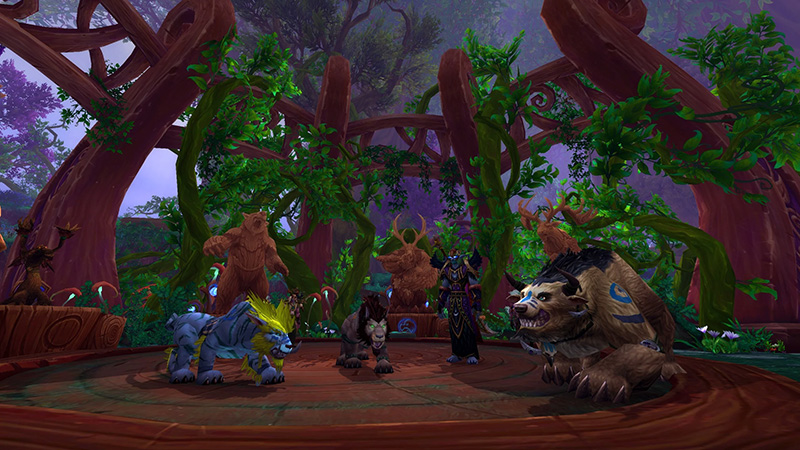
Balance Druid in PvE (Boomkin)
Balance Druids (nicknamed "Boomkins") wield the power of the moon and stars to deal ranged magical damage. In Classic, Balance is often considered a "meme spec" because of its high mana consumption and lower damage compared to mages/warlocks. However, in a Hardcore PvE context, a Balance druid played smartly can still contribute and is fully capable of clearing dungeons and even raids – you just need to manage your mana and threat carefully.
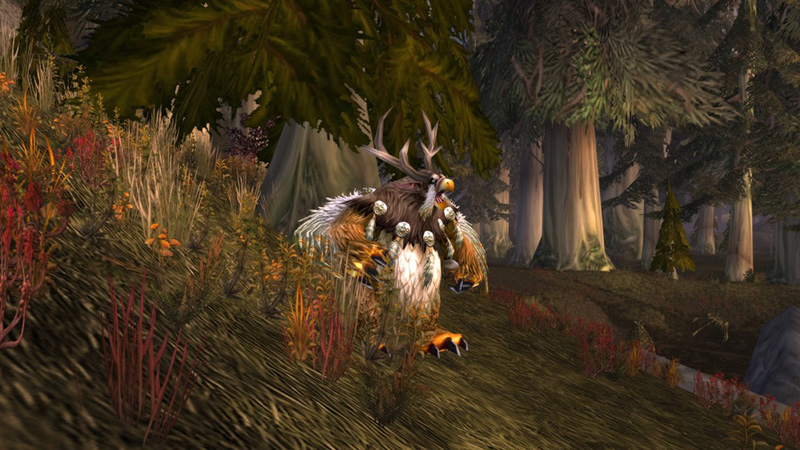
Balance Talent Build
A standard Balance PvE build is 31 Balance / 0 Feral / 20 Resto. The goal is to grab Moonkin Form (31-point Balance) and supportive talents in Resto for mana efficiency. Key Balance talents:
- Nature's Grace (Tier 5 Balance) – after you crit with a spell, you gain a 0.5 sec cast time reduction on the next spell. This is huge for casting faster Wraths or Starfires.
- Moonglow (Tier 4 Balance) – reduces mana cost of your main nukes by 9% at max rank. Essential for mana longevity.
- Moonfury (Tier 6 Balance) – increases damage of Starfire, Moonfire, Wrath by 10%.
- Moonkin Form – gives you +3% spell crit aura and armor bonus, and allows you to regenerate mana on crits (kind of like a built-in small mana battery for your group). In a raid with multiple casters, your aura is nice to have.
In Restoration, pick up Reflection (3/3) for increased mana regen in combat, and Innervate (1/1 at 20 points resto) unless another druid will cover Innervate. Often a 30/0/21 build (Moonglow spec) is used: 30 in Balance to get Moonglow, skip Moonkin form, and 21 in Resto for Innervate. This is sometimes preferred because Innervate can give you or an ally a huge mana boost and Moonkin form's benefits might not outweigh that utility (plus, casting in Moonkin form means you can't heal as easily if needed). If you plan to primarily DPS in raids, the 31/0/20 Moonkin build is fine; if you might off-heal or need more mana tools, consider 24/0/27 or 30/0/21 splitting between Balance and Resto (often called Dreamstate or Moonglow builds).
As a Balance druid in PvE, you function similarly to a mage but with some twists:
- Rotation: Keep Moonfire dot up on the target (unless fight is very long, as Moonfire is high mana per damage), use Starfire as your main filler on longer fights (more efficient) and Wrath on shorter fights or if you need faster cast. With Nature's Grace, if you crit a Starfire, your next Starfire will be quicker – you can sometimes chain-cast Starfires faster with lucky crits. Use Insect Swarm (if talented from Balance tree) to reduce enemy hit chance by 2% – useful on bosses to ease tank damage. However, note that Insect Swarm is a 6% miss debuff which some min-maxers avoid if the debuff slots are limited; in Hardcore, survival > debuff slot concerns, so use it if you can.
- Mana Management: This is your biggest challenge. Carry lots of mana potions (and Demonic Runes or Dark Runes from Scholomance if you can farm them safely). You will likely need to pot mana in longer fights. Use Innervate on yourself if you're about to go OOM (or on a healer if they need it more and you can afford to chug a potion instead).
- Omen of Clarity: If you have a deep Resto friend or if you spec 11 into Resto yourself for Omen, remember that melee attacks can trigger free spell casts. You can whack the boss with your staff in Moonkin form to try for Omen procs (Moonkin form has increased armor, so you're not too squishy doing this). It's a quirky playstyle some Balance use: weave in some melee swings to fish for free casts. Just be mindful of threat and boss mechanics if you get that close.
- Threat: Balance druids lack threat reduction talents, so be careful with early burst. Let the tank build threat before you Starfire crit a mob into you. If you do pull aggro, you can pop Barkskin and continue casting (Barkskin reduces your damage though, so it's more for surviving until tank taunts). Or just run toward the tank while in Moonkin (for armor) and hope they grab it back. Better is to avoid pulling threat in the first place.
Moonkin form also gives you some physical mitigation (180% armor increase), so you're not as squishy as a mage if something looks at you, but you lack escape tools (no blink, etc.). If things go bad, you can always cancel Moonkin form and go Bear or Travel Form to flee – a Balance druid can still use all the base Druid tricks if needed (you're not locked in casting).
Gear and Best-in-Slot for Balance
Balance druids gear for Spell Damage/Healing (in Classic, +Spell power was often unified). They also love Spell Crit (to trigger Nature's Grace and get mana back in Moonkin). Intellect is huge (for mana pool and crit), and Spirit/MP5 for regen since fights can outlast your mana.
Unlike feral, leather caster gear is scarce, so you will wear a lot of cloth:
| Slot | Item | Source | Notes |
|---|---|---|---|
| Head | Dreamweave Circlet | Crafted | Great pre-raid headpiece |
| Shoulder | Burial Shawl | Stratholme | Good spell damage |
| Chest | Robe of the Archmage | Crafted (Tailoring) | Lots of spell power and crit |
| Weapon | Staff of Dominance | Molten Core | Excellent spell power |
| Trinkets | Eye of the Beast | UBRS | Spell crit |
Basically, you'll often look like a slightly off-brand mage/moonkin, borrowing caster cloth gear. This might actually be easier to obtain in Hardcore if there are fewer clothies around, but be mindful not to take gear from vital healers/DPS who might need it more for the group's success.
PvE Role and Tips for Balance Druids
In raids, coordinate with other druids on who is providing Innervate to whom. Often, Balance druids might Innervate a healer rather than themselves if it benefits the raid more, and then use potions for their own mana. Always keep Faerie Fire up on bosses (let the Feral druid handle it if one is present, since it's free for them). Use Rebirth judiciously – on Hardcore, you can't truly resurrect a dead ally, but if your raid is doing a "one and done" boss attempt, you might be on a non-hardcore alt or something (some Hardcore guilds allow bringing one non-HC healer to rez after boss – but if strictly all Hardcore, ignore Rebirth entirely). Your job then is more about preventing death: you could shift out and cast a clutch Regrowth on a critically low tank if needed. As a Boomkin you won't top damage meters, but you can bring a lot of utility and off-healing that in Hardcore is worth its weight in gold.
Restoration Druid in PvE (Healing)
Restoration Druids are potent healers in PvE, specializing in heal-over-time spells and raid healing. In Classic raiding, Restoration was the most common spec for druids. In Hardcore, a strong healer is the backbone of any dungeon or raid, and a Resto druid's array of HoTs and emergency cooldowns can literally mean life or death.
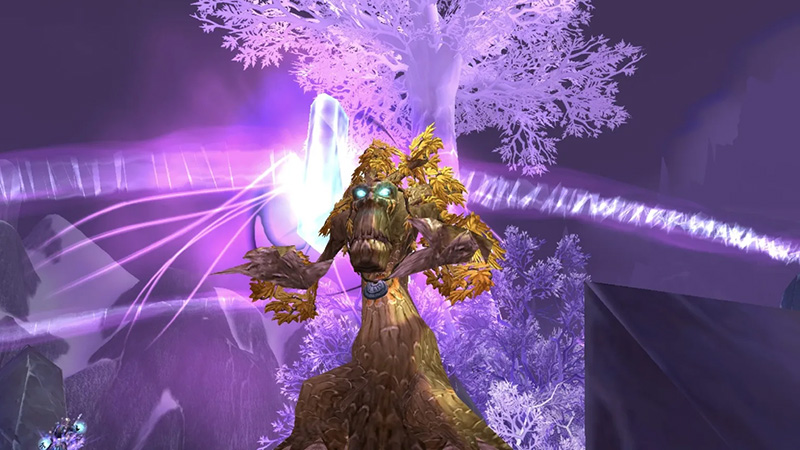
Restoration Talent Builds
There are a couple of popular Resto builds in Classic:
- Swiftmend Build (8/0/43): This goes deep into Restoration to get Swiftmend (31-point talent, which instantly consumes a HoT on the target to deliver a burst heal) and also takes talents like Improved Rejuvenation and Gift of Nature for maximum HoT power. Typically 5 points in Improved Mark of the Wild (Balance tree) and maybe 3 in Nature's Grace (Balance) or Furor (Feral) as leftover.
- Moonglow Build (24/0/27 or 21/0/30): This build invests into Balance up to Moonglow (reducing mana cost of healing touch, regrowth, rejuv by 9%) and Nature's Grace, and then 20-21 into Resto to get Innervate. It forgoes Swiftmend. The idea is more mana efficiency and faster Healing Touch cast on crit (via Nature's Grace), which can be very useful if you primarily cast big heals.
Either way, important Restoration talents:
- Improved Rejuvenation (3/3): Boosts Rejuv healing by 15% – a must if you use Rejuvenation often (Swiftmend build definitely takes this, Moonglow might skip to get further in Balance).
- Gift of Nature (5/5): 10% bonus to all your healing spells – great for throughput.
- Reflection (3/3): 15% mana regen continues while casting – helpful for long fights.
- Tranquil Spirit (5/5): Reduces mana cost of Healing Touch by 10% – key if you use a lot of Healing Touch (usually taken in Moonglow builds in combo with Moonglow for -19% total mana on HT).
- Innervate (1/1 at 21 points): Even if you are not healing, Innervate is so good that Balance or Feral druids splash Resto 21 to get it. As a healer, you'll want to have this to use on yourself or another healer.
A sample Hardcore healing build could be: 21 Balance (Nature's Grace, Moonglow) / 0 Feral / 20 Resto (including Innervate, Improved Rejuv, and some in Tranquil Spirit). This gives you a bit of everything – efficiency, emergency faster casts, and Innervate.
Druid healing in Classic is unique because of our Heal-over-Time spells:
- Rejuvenation: Instant cast HoT, bread-and-butter for topping people off or pre-healing incoming damage. In raids you'll throw Rejuvs on multiple people taking damage (e.g., after a big AoE). In Hardcore, keeping a Rejuvenation on the tank at all times is a nice safety buffer, as long as you manage mana.
- Regrowth: A faster cast (2 sec) heal that heals a chunk immediately and then a HoT. It's expensive mana-wise and the HoT can't stack from the same druid, so usually used as a quick top-up + buffer on the tank or someone who might need continuous healing.
- Healing Touch: The big one. With talents, you can reduce its cast time (3.5 sec base) significantly or downrank it for faster casts. Down-ranking Healing Touch is a key druid technique: for example, Healing Touch Rank 4 or 5 (cheaper, quicker casts) can be spammed to heal modest damage efficiently. Meanwhile, max-rank HT is for big emergency heals but will eat your mana.
- Swiftmend (if talented): Use it when someone with your Rejuv/Regrowth is about to die and you can't wait for the HoT tick. It will consume the HoT and give an instant chunk. It can save lives, but note it's on a short cooldown and consuming your HoT means you might need to reapply that HoT if the fight isn't over.
- Innervate: Use on a priest or yourself depending on raid needs. In Hardcore, it might be smart to Innervate yourself proactively to keep HPS up rather than risk a tank dying because you went OOM.
- Tranquility: Big channeled group heal. In raids, usually not used except in dire situations because of high threat on all targets healed. But if multiple people are about to die, a druid can pop Barkskin then Tranquility to avoid pushback and try to save the team. It's a risk if any mobs are alive hitting you (they'll likely come for you). In 5-mans, a well-timed Tranquility can stabilize a near-wipe scenario (e.g., if extra mobs pulled, pop it when tank has aggro on everything to buy time for others to kill or escape).
Healing in Hardcore vs Normal: In Hardcore, you might favor overhealing slightly to ensure tanks stay topped. It's better to waste a bit of mana than to have the tank unexpectedly bursted from 40% to 0%. Coordinate with other healers – druids excel at healing raid-wide damage and supporting tanks with HoTs, while classes like priests and paladins handle most big single-target heals. However, a druid with Nature's Grace can also pump out some clutch fast Healing Touches if specced for it.
One advantage in Hardcore: Many raids might take it slower and not require speed-clear tactics, so you can regen mana in between pulls more freely and use downranking to your advantage. Sit and drink whenever possible; never go into a boss fight half mana.
Gear and Best-in-Slot for Restoration
Healers typically gear for +Healing, MP5, Spirit, Intellect, Stamina. Druid healers in Classic often wear a mix of leather and cloth, prioritizing stats over armor type (though you get a bonus 5% healing for wearing all leather in later expansions, Classic does not have that, so wear cloth if it's better).
| Slot | Item | Source | Notes |
|---|---|---|---|
| Cloak | Hide of the Wild | Crafted | +healing cloak |
| Shoulders | Wild Growth Spaulders | DM East quest | Great +healing leather shoulders |
| Chest | Robes of the Exalted | Stratholme | +84 healing cloth chest |
| Trinkets | Royal Seal of Eldre'Thalas | DM class trinket | +healing and MP5 |
| Set pieces | Cenarion (Tier 1) | Molten Core | Mix of stats, some pieces are decent |
Generally, stack as much +Healing as you can without your mana pool suffering. A common strategy is to have two sets: a max +healing set for shorter fights or when you can chain potions, and a regen set with more MP5/Spirit for longer encounters. For example, you might swap a trinket to an MP5 trinket during a lengthy boss.
Healing Tips for Hardcore Dungeons & Raids
Restoration is a very safe and desired spec for Hardcore – your contributions directly keep the group alive. Many Hardcore players will be thankful to have a skilled Resto druid keeping them safe through each dungeon and raid.
Professions and Economy for Hardcore Druids
Choosing the right professions can significantly enhance your Druid's survivability and effectiveness, as well as help you manage the unique economy of Hardcore servers (where characters are constantly being reborn and resources can be scarce). Here we'll discuss the best profession choices and some trading/gold-making tips for Druids in Hardcore.
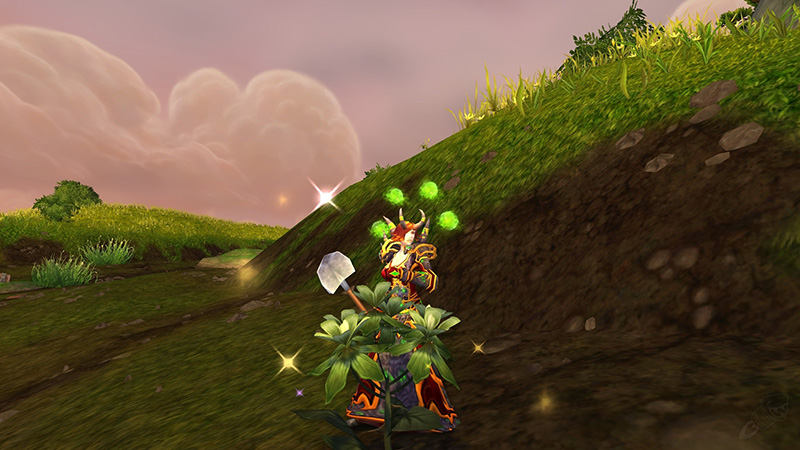
Best Professions for a Hardcore Druid
- Mining & Engineering – This is a close second-best. Engineering is famed for its gadgets: explosives (grenades, dynamite) to stun or damage groups, Target Dummies to distract mobs, Goblin Rocket Helmet to incapacitate an enemy, etc. These are powerful tools for both PvE and "oh crap" moments. However, for Druids specifically, the drawback is you must leave form to use most engineer items. That can interrupt your flow or expose you at a bad time. Still, many Hardcore players swear by Engineering for the sheer utility and fun – and it gives you options no other profession does (like Goblin Jumper Cables to attempt a revive on a dead party member – though note on Hardcore servers, you can't resurrect players, so cables won't work there). Mining provides materials for Engineering and can be a decent money-maker (ore for sale). One additional perk: Mining while in bear form isn't possible (must shift out), but you can quickly shift back if attacked. If you opt for this, plan your button presses carefully.
- Skinning & Leatherworking – A solid, self-sufficient combo especially for Feral druids. As you level, you can skin beasts you kill and craft your own leather armor upgrades. Leatherworking offers some excellent gear for Druids: e.g., Deviate Hide gear (low-level), Barbaric Harness set (20s), Wolfshead Helm (crafted BoE helm at 40, BiS for feral DPS), Devilsaur Set (for level 55+, top DPS gear), and even resistance gear (Primal Batskin for nature resist, etc.). You can also make armor kits to add extra armor to gear (every little bit helps in Hardcore). The downside is inventory clutter – you'll carry lots of leather and kits around. Skinning is easy to level while you quest (almost every zone has beasts). If you don't need the fancy gadgets or potions, this route can gear you up nicely and any surplus leathers or crafted gear can be sold.
- Enchanter & Tailor (or Enchanter solo) – Less common for Druids, but possible. Enchanting gives you the ability to disenchant unwanted gear (helpful since you can't always trade freely in Hardcore depending on rule set, but on official HC you can trade, so you could also sell enchants). Self-enchanting your gear with +stats, +armor, etc., is helpful. Tailoring doesn't benefit druids much except you could craft some tailoring BoE gear to sell or wear cloth pieces like Bloodvine if you went Balance (requires Tailoring to activate set bonus). Not the top choice, but enchanting can complement any other profession if you drop one later.
In summary, Herbalism/Alchemy is highly recommended for overall survivability, with Engineering as a strong alternative if you prefer gadgets. You can even do Herb/Eng (drop Mining and just buy materials) if you mainly want the devices. Just remember, whatever you choose, use the items – a stocked toolbox of potions or bombs does nothing if you forget to use them when it matters.
Trading and Gold-Making Tips for Hardcore
The economy on Hardcore servers can be quirky. With players coming and going (sometimes unexpectedly due to death), certain items become very valuable:
- Consumables: Since everyone is trying not to die, potions, elixirs, bandages, and buff food are always in high demand. As an Alchemist, you can sell excess potions for good profit or trade them for gear. Even low-level potions like Minor Healing find buyers as fresh HC characters gear up.
- Bag space: Bags are life-savers (literally, more bag space means more potions and supplies). If you pick up Tailoring or find bag drops, selling bags can be lucrative early on.
- Materials: Many Hardcore players focus on survival, so they may buy materials rather than gather in dangerous areas. Herbs, ores, leather can fetch good prices on the auction house. Druids can especially take advantage of stealth and travel form to gather in higher level zones relatively safely (e.g., sneak into a high-level area to grab an herb and sneak out). Just be very cautious doing this – risk vs reward.
Utilize the Auction House carefully: On official Hardcore servers, the AH is active. Sell things that are in demand (consumables, crafting mats, green "of the Monkey/Eagle" gear with good stats). Buy things that make you safer – e.g., if there's a cheap Green Whelp Armor (has chance to sleep attacker on hit) or Lucky Charm type items, those quirky items can be fun safety nets. Always have an eye on the "death announcements" channel (if any) – if a high-level enchanter died, there might be a gap in the market until another comes up, etc. It's a dynamic economy.
Trading with other players: If you're doing self-found hardcore, you won't trade at all. But on official servers, trading is allowed. You might find guildmates who can craft gear for you (like a Blacksmith making an Enchanted Thorium Leggings for bear tank, etc.) in exchange for mats or other services. Being part of the community economy is part of the Hardcore experience – everyone knows death can snatch away hard-earned goods, so people often are generous and helpful too. Still, always be ready to be self-reliant, because you never know when you'll have to solo for a while if friends perish.
In short, play to the Druid's strengths: use stealth to gather valuables, use your professions to support yourself and make gold, and don't waste resources. Gold is not just for flex in Hardcore – it buys you lifesaving elixirs, gear, and your mounts to escape danger. Manage it wisely, and you'll be better prepared for whatever Azeroth throws at you.
Endgame PvE Tips for Hardcore Druids
Reaching level 60 on Hardcore is a huge accomplishment – but the journey isn't over if you plan to tackle endgame content like raids and high-level dungeons. Here are some overarching tips for endgame PvE as a Druid on Hardcore:
Finally, remember to enjoy the journey. Hardcore PvE is challenging, but extremely rewarding. Every boss kill with no deaths feels like a triumph. Every close call where you save a teammate with a timely heal or perfectly executed cooldown reminds you why Druid is such a special class. Embrace that Druid hybrid power – you truly can do it all, and in Hardcore, you often will do it all to keep yourself and your allies alive.
By following this guide, you should be well-equipped to master the Druid in WoW Classic Hardcore PvE. From the early leveling grind to endgame raids, Druids bring adaptability and unique tools that make them a formidable choice for a no-death adventure. Stay alert, plan ahead, and use every trick in the book (and then some) – Azeroth's dangers are many, but with the wisdom of the wilds on your side, you can overcome them. Good luck on your Hardcore journey, and may Cenarius watch over you!



